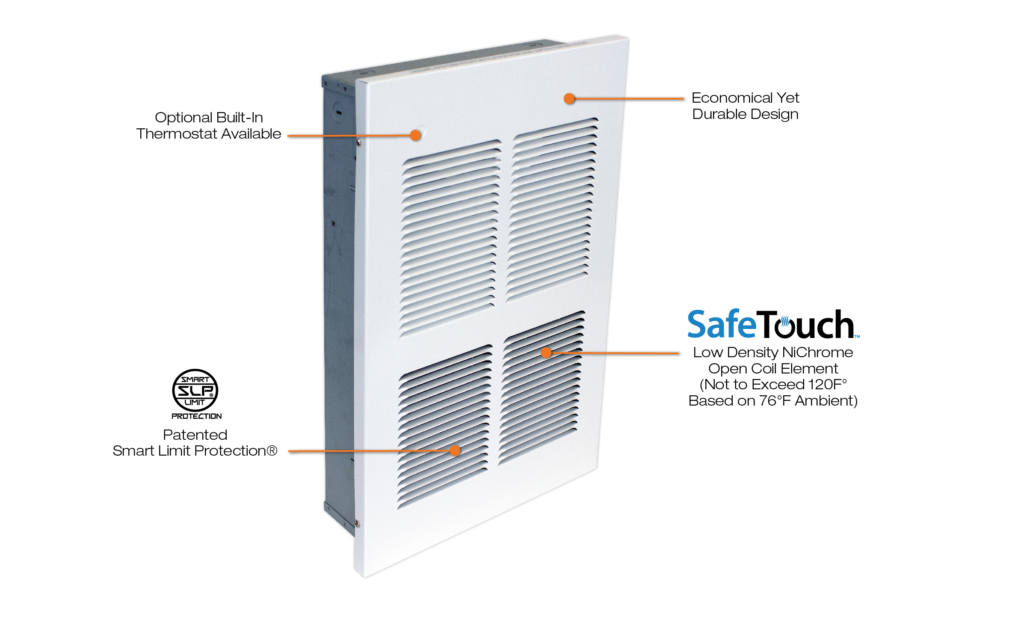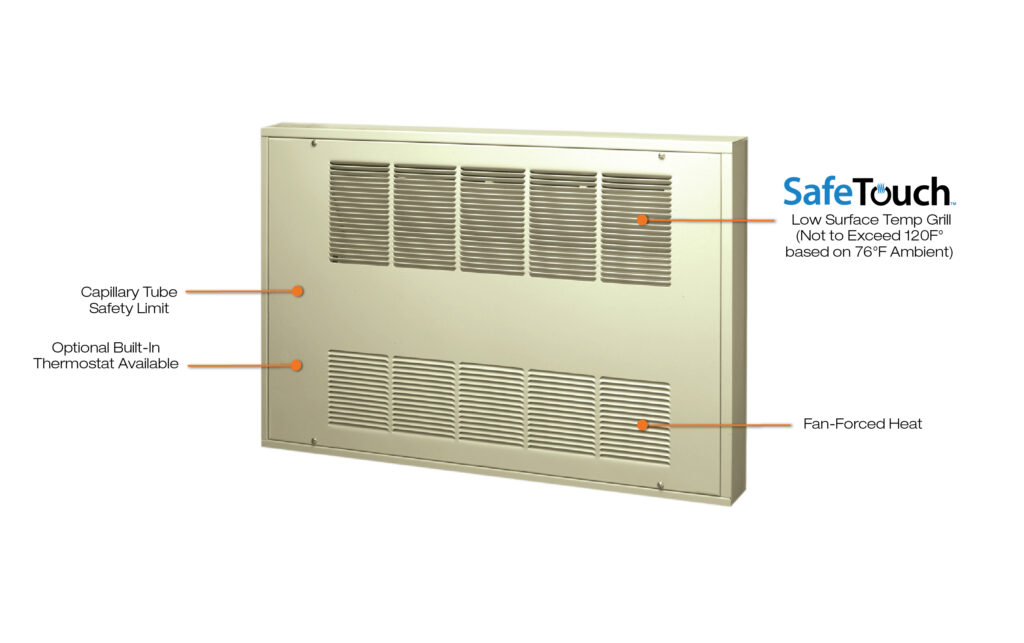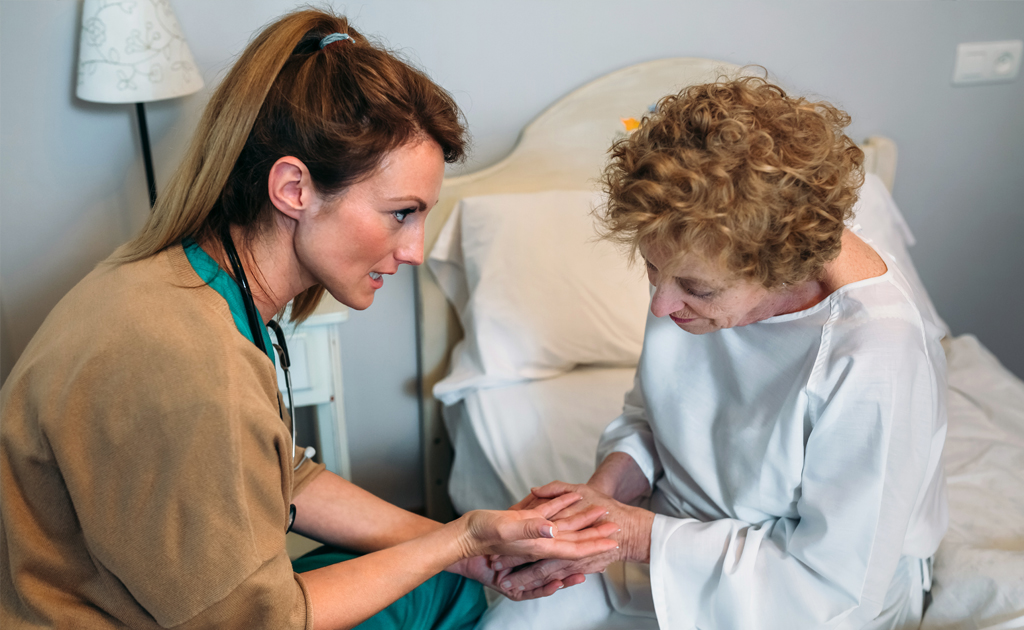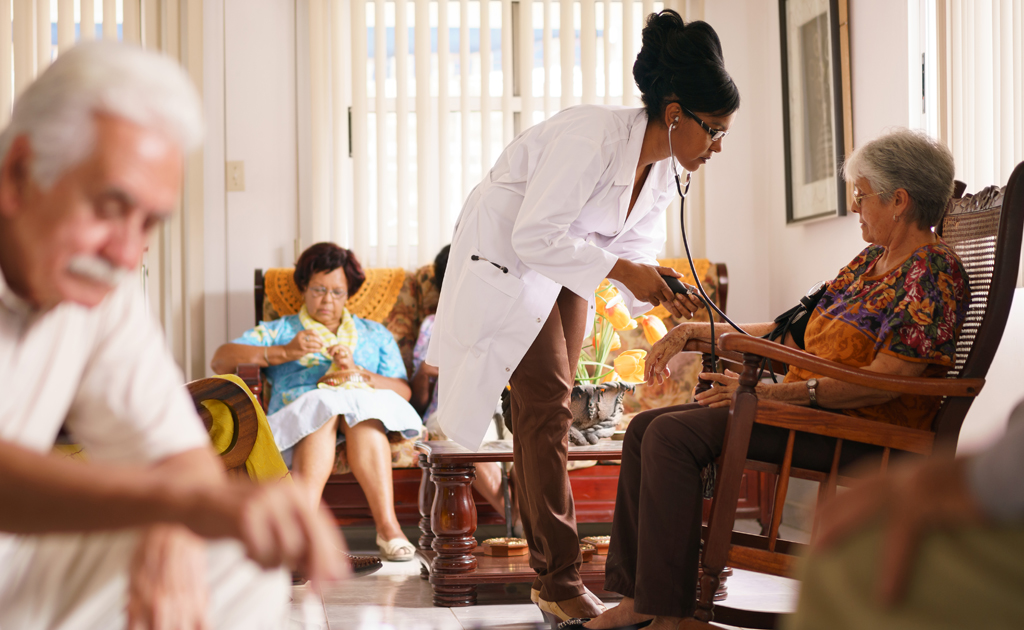
Heaters For Assisted Living & Daycare Facilities
Prioritizing the protection of high-risk patients in assisted living facilities, day care centers, and memory care centers is essential for their well-being and quality of life. This requires a comprehensive approach that addresses physical and environmental, and emotional needs while upholding ethical standards and legal obligations.
In many states, regulators have either implemented code requirements or released recommended guidelines, limiting the surface temperatures allowed on wall heaters installed in those facilities.
The introduction of King’s SafeTouch Series of heaters addresses these regulatory requirements. These heaters are specifically designed to not exceed 120F surface temperature limits, ensuring compliance with safety standards. By replacing older high-wattage baseboard or fan-driven heaters with SafeTouch heaters, facilities can mitigate potential risks associated with traditional heaters that may reach higher temperatures.
Often enforced by inspectors to ensure compliance with safety regulations, by utilizing SafeTouch heaters, the risk of accidental burns over time is significantly reduced, contributing to a safer environment for residents, patients, and visitors alike.

EFW-LD SafeTouch
Model EFW-LD is a large fan-driven wall heater, available in 1000W @ 120V or 1200W @ 208V and 240V. Surface Temperatures will not exceed 120F.
- Low Density Heat Output
- Max Surface temp 120F
- Designed for Assisted Living Facilities, Daycare Centers, Memory Care Centers, or Any Facility With High-Risk Occupants
- Connected Multiple Heaters To One Thermostat For Higher Output
- NiChrome Open Coil Element For Quick Heat Transfer
- Patented Smart Limit Protection®
- Long Life Unit Bearing Motor
- Optional Built-In Thermostat Available
- Proudly Made in the USA with U.S. & Global Materials

KCF SafeTouch
Model KCF SafeTouch is a large fan-driven cabinet heater available in both single phase and 3-phase models, up to 2000W in voltages of 208V ,240V, 277V and 480V.
- Low Density Heat Output
- 120ºF Max Surface Temperature
- Designed for Assisted Living Facilities, Daycare Centers, Memory Care Centers, or Any Facility With High-Risk Occupants
- Fan-Forced Heat
- High Mass Ceramic Heating-core with Aluminum Fins
- Low Noise Squirrel Cage Blower
- Capillary Tube Safety Limit
- 1 or 3-Phase
- Proudly Made in the USA with U.S. & Global Materials
How Is SafeTouch Achieved?
The low surface temperatures of SafeTocuh heaters is achieved through the use of low-density style heating. The term “low density” refers to the design of the heating element, specifically the spacing of the resistive wire within the element.
In a low-density heater, the resistive wire is wound or spaced in such a way that it covers a larger area of the heating element, resulting in a lower wattage per square inch of surface area compared to high-density heaters. This design allows for a gentler and more even distribution of heat, reducing the risk of overheating and extending the lifespan of the heating element.
Why Protecting High-Risk Patients Is Important
Vulnerability:
High-risk patients often include elderly individuals, those with chronic illnesses, cognitive impairments, or mobility limitations. These individuals are more susceptible to accidents, injuries, and health complications, making it crucial to provide a safe and secure environment for them.

Safety:
Assisted living facilities are responsible for ensuring the safety and well-being of their residents. Implementing measures to protect high-risk patients, such as installing SafeTouch heaters, reduces the likelihood of accidents and promotes a safer living environment.

Legal and Ethical Obligations:
Assisted living and child-care facilities have legal and ethical obligations to provide a standard of care that ensures the safety and dignity of their residents. Failing to adequately protect high-risk patients can result in legal liabilities, regulatory sanctions, and reputational damage.

Quality of Life:
Protecting high-risk patients enhances their quality of life by minimizing the risk of injuries, accidents, and adverse health events. When residents feel safe and secure, they can enjoy greater independence, autonomy, and peace of mind, contributing to their overall well-being.

Family Trust:
Families entrust assisted living and child-care facilities with the care of their loved ones, especially those who are high-risk. Providing a safe and nurturing environment reassures families and enhances their satisfaction with the facility’s services.
